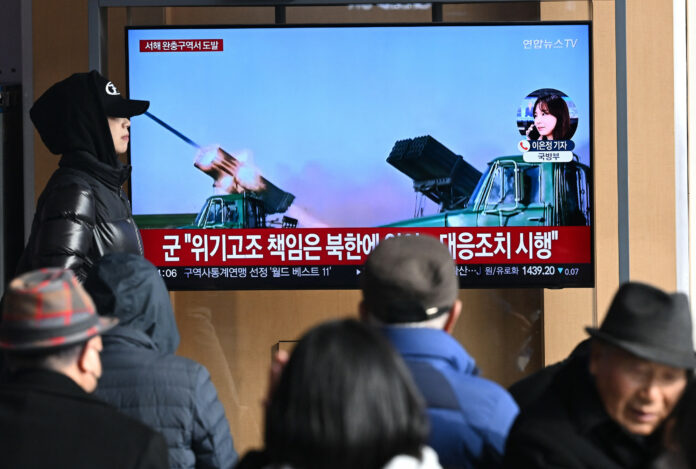North Korea fired hundreds of artillery shells near a pair South Korean islands Friday, leading to an evacuation.
Some 200 artillery rounds were fired between 9 a.m. and 11 a.m. in the vicinity of Baengnyeong and Yeonpyeong islands South Korea’s Joint Chiefs of Staff said. Yeongpyeong residents were told to make for shelters as a precaution.
No casualties were reported. The shells landed in the Yellow Sea north of the Northern Limit Line, the de facto maritime boundary between North and South Korea, Seoul’s defense authorities said.
North-South tensions have been rising after the communist country successfully launched its first spy satellite in late November. Supreme Leader Kim Jong Un’s increasingly bellicose rhetoric includes a recent threat to “thoroughly annihilate” the U.S. and South Korea. He also rejected eventual reunification with South Korea—a sudden departure from the country’s longtime stance.
Situated just a few miles off the North Korean coast, Yeonpyeong was peppered with North Korean shells in 2010, resulting in four deaths—the first since the end of active hostilities between Pyongyang and Seoul in 1953.
A spokesperson for South Korea’s defense ministry said the shelling was a provocative threat that increases tensions.
He added that the country was monitoring the situation in close coordination with the U.S. and would “take measures to respond to North Korea’s provocations.”
Newsweek reached out to North Korea’s foreign ministry with a written request for comment.
South Korea partially suspended a key military accord reached in 2018 to reduce tensions following the satellite launch by Pyongyang, which the White House called a “brazen violation of multiple U.N. Security Council resolutions.” Seoul also announced it was resuming surveillance flights over the 2.5-mile-wide demilitarized zone between North and South Korea.
The Security Council imposed a ban on North Korean satellites over their potential to benefit Pyongyang’s ballistic missile program.
North Korea hit back by pulling out of the pact entirely, warning the South would be responsible for any “irretrievable” clash that might ensue. The South Korean defense ministry said provocation by Pyongyang would be met with “immediate and resolute finishing punishment.”
Kim Jong Un has pledged to put an additional three spy satellites into orbit this year.
Jung Yeon-je/AFP via Getty Images
In spite of international sanctions, North Korea continues to advance its nuclear weapons and ballistic missile programs, last month launching a Hwasong-18 intercontinental ballistic missile analysts said might be capable of reaching the continental United States.
South Korea maintains a mutual defense treaty with the U.S. and hosts a significant American military presence. Washington has recently been making a visible effort to signal its support for its ally amid the North’s saber-rattling.
In July 2023 the U.S. sent a nuclear-armed submarine to South Korea for the first time in four decades, in a pointed message to Pyongyang.
In October, fighter jets from the South Korean and Japanese air forces joined U.S. fighters and a nuclear capable B-52 strategic bomber in the countries’ first-ever-trilateral aerial drill.
Despite the end of active hostilities seven decades ago, the Korean Peninsula remains technically at war, as no peace treaty was ever formalized.
Uncommon Knowledge
Newsweek is committed to challenging conventional wisdom and finding connections in the search for common ground.
Newsweek is committed to challenging conventional wisdom and finding connections in the search for common ground.


